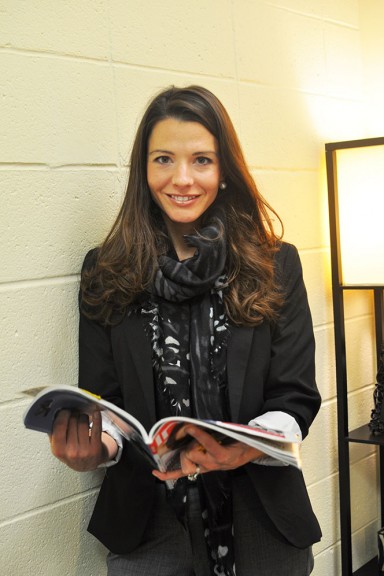
In her new book, “Remake, Remodel: Women’s Magazines in the Digital Age,” Brooke Erin Duffy, assistant professor of advertising in the School of Media and Communication, confronts the gender gap in the digital communication industry.
“In the media industry, individuals are confronting changes and trying to make magazines into brands that extend off the printed page and online,” Duffy said.
The book was a product of her dissertation research at the University of Pennsylvania.
“I always read women’s magazines and felt a bit conflicted,” Duffy said. “I read as a consumer and a reader at the same time, and going through college I criticized the patterns and the issues of women’s magazines. They portray women in stereotypical ways.”
This is a byproduct, she said, of a digital age that has transformed magazines into a niche commodity.
“In media industries and their institutions, instead of the text, I was more interested in the production culture of how they are made and who were the people making these publications,” Duffy said. “I wanted to know, ‘How is the industry changing?’ No one has been studying the changes since the early 2000s, so there’s been many changes in the way media is produced and consumed. It was something that spoke to my personal interests.”
Duffy’s book emphasizes the changes in media culture from editorial content to job positions. Publications want to brand themselves, she said, shaping magazines into digital formats such as television shows or technological applications.
With the digital media advances, Duffy said the journalistic workforce is affected by the drive of technology, shifting the need for certain job positions.
“It’s changing the work culture by who is getting hired,” Duffy said. “Publications are bringing in people that are digitally savvier and usually with an emphasis on younger staffers and male staffers. It’s assumptions about who is better digitally – women are much more interested in community and men are more interested in the gizmos and the gadgets.”
This gender gap in technological expertise is problematic for women in the workforce, Duffy said, particularly in industries focused on communication that have increasingly moved into the digital realm.
“Technology in general is dominated by men,” she said. “The participation by men tends to overshadow women, and this dictates the content and the hiring decisions based on these assumptions on whether women are tech savvy. The problem with gender usually comes in the higher-up fields. It’s the executive culture that is highly gendered.”
In order for journalists in the modern age to survive, they should have experience working on projects that have some sort of digital component, Duffy said.
That applies to students who are trying to break into the industry. A wide skillset is the most advantageous position for an aspiring journalist, she said.
“People that have been successful have started blogs or websites that show capability of search engine optimization and creating the right platforms,” Duffy said. “But I think a lot of the issues magazines are facing in terms of gender dynamics can tell us a lot about how the media industry is changing in the 21st century.”
The nature of digital media also lends itself to entrepreneurial media professionals, Duffy said.
“The main component is the idea that we as the consumer can go online and create content and work alongside digital media professionals with social media sites, and in general it allows for you or I to become famous,” Duffy said. “I think the biggest change companies in both media and advertising can do is to integrate consumers in ways that are economically profitable.”
Duffy said she believes advertising industries and media content have a closer relationship than ever, and the commercialization of media content with advertisements has become interconnected.
“They’re industries and they’re trying to survive just like any other company, and companies are working with advertisers in ways that are far more close than it’s ever been,” Duffy said. “The content is guided by the interest of advertisers.”
Above all else, Duffy said she wants readers to be aware of how the content they find published by magazines may be impacted by the nature of the digital age.
“I think you really need to have awareness in terms of who creates the content, of editorial advertising dynamics, thinking critically, making sure we know where the content comes from and the financial motivations behind it,” Duffy said.
Shayna Kleinberg can be reached at shayna.kleinberg@temple.edu.


Be the first to comment